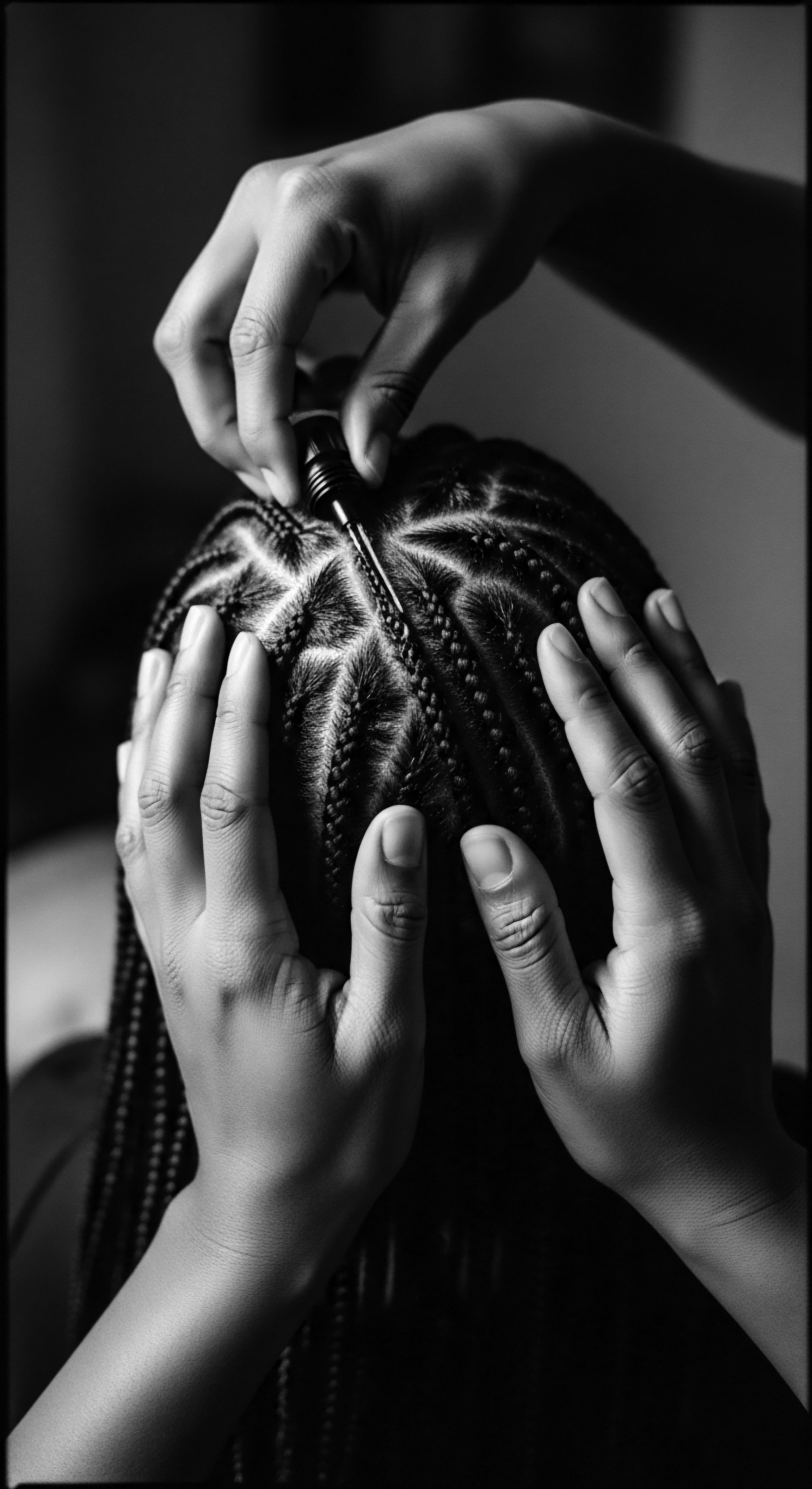
Fundamentals
The spirit of hair product innovation, when viewed through the lens of Roothea’s ‘living library,’ transcends mere commercial novelty. It stands as a testament to humanity’s enduring connection with the self, with community, and with the very earth that sustains us. This definition, a meditation on the textured hair journey, acknowledges that true innovation is not solely a modern construct; its roots extend into the deepest recesses of ancestral wisdom, echoing from the source of human ingenuity. Understanding this begins with a fundamental appreciation for the hair strand itself, a delicate yet resilient helix that has, across millennia, demanded care, protection, and adornment.
At its simplest, the Hair Product Innovation represents the creative evolution of substances, tools, and practices aimed at preserving, enhancing, and styling hair. This explanation is not confined to the laboratories of today; it encompasses the ancient hands that first pressed oils from seeds, the communal gatherings where plant extracts were blended, and the rhythmic movements of braiding that shaped hair into declarations of identity. The very concept of hair care, from the earliest human societies, necessitated a thoughtful engagement with available resources, leading to the development of rudimentary yet remarkably effective solutions. This initial designation of care practices laid the groundwork for all subsequent advancements, underscoring a continuous lineage of inventive adaptation.
Consider the elemental biology of textured hair, particularly the intricate architecture of curls, coils, and kinks. These patterns, beautiful in their diversity, possess unique needs for moisture retention, structural integrity, and gentle handling. From the dawn of human experience, individuals recognized these distinct requirements, prompting an intuitive, hands-on approach to problem-solving. The earliest forms of Hair Product Innovation arose from this direct observation and a profound understanding of the natural world.
People sought solutions for cleansing without stripping vital oils, for conditioning in arid climates, and for styling in ways that signified status, marital standing, or tribal affiliation. This historical context provides the foundational sense of what hair care has always sought to achieve.
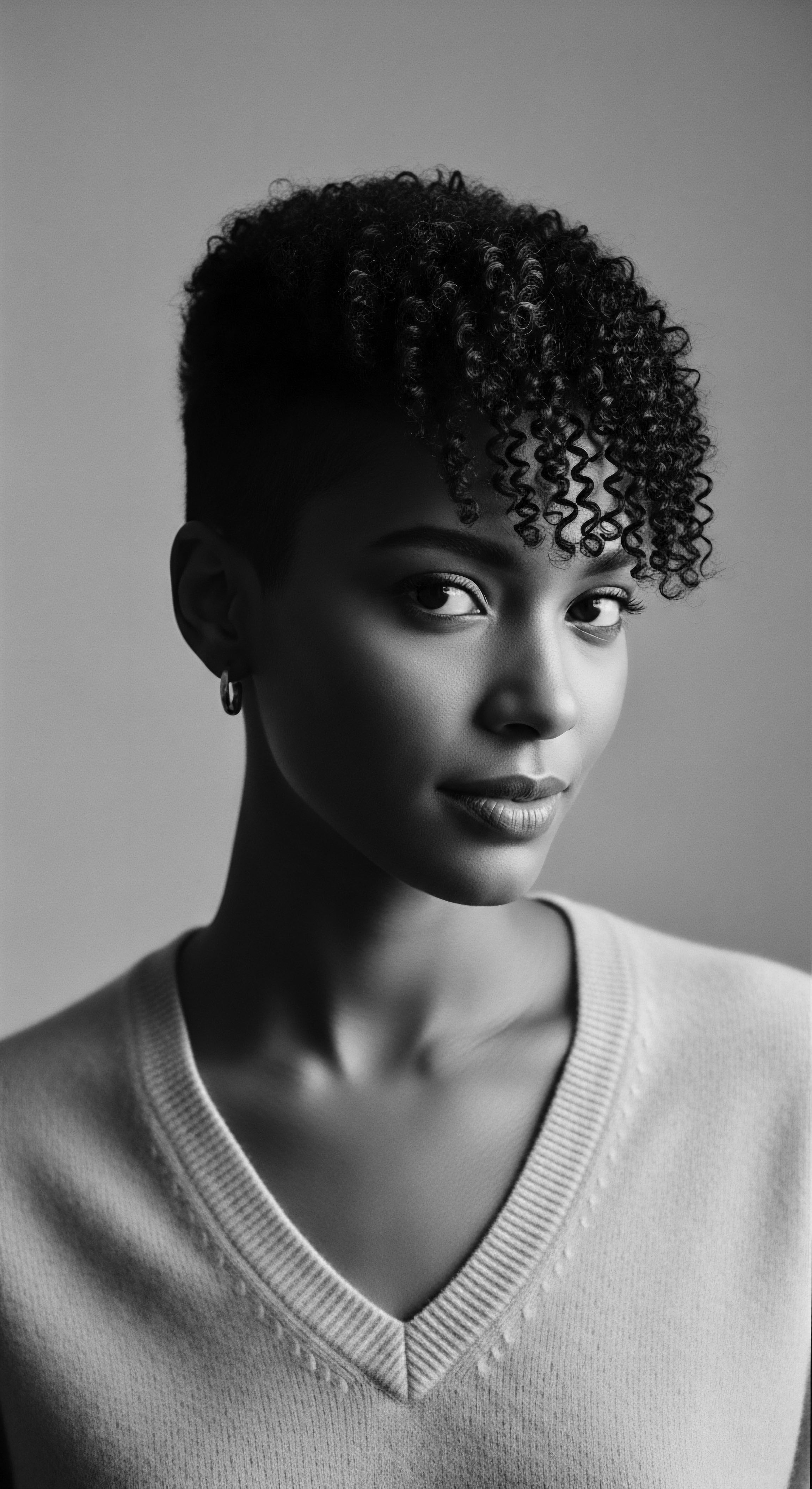
The Ancient Roots of Care
Across ancient civilizations, the quest for hair wellness manifested in myriad forms, each a pioneering step in its own right. The earliest innovations were born from necessity and a deep reverence for the natural world. In regions of Africa, where diverse textured hair types thrived, people turned to the botanical bounty around them. Plant oils, rich in emollients, served as protective balms against harsh sun and drying winds.
Clays and natural earths provided cleansing properties, absorbing impurities while often depositing beneficial minerals. Animal fats, too, found their place in early hair preparations, offering deep conditioning and sealing moisture within the hair shaft. These practices, passed down through generations, constituted the initial iteration of hair product development, a testament to ancestral resourcefulness.
The preparation of these early concoctions was often a communal endeavor, imbued with ritual and shared knowledge. Women gathered to process shea nuts into butter, to crush herbs for their aromatic and medicinal properties, or to mix ochre with fats for both cosmetic and protective applications. This collaborative spirit ensured the preservation and refinement of techniques, embedding hair care within the social fabric of the community.
The delineation of these methods, though unwritten, formed a living library of traditional cosmetology, demonstrating a sophisticated understanding of natural chemistry and its application to hair. Each ingredient, each preparation method, carried a specific significance, an intention that extended beyond mere physical benefit into the spiritual and cultural realms.
Early hair product innovation, deeply rooted in ancestral wisdom, represents humanity’s resourceful adaptation of nature’s bounty for the unique needs of textured hair.
These ancestral approaches highlight a critical aspect of Hair Product Innovation ❉ its intrinsic connection to environmental context. People utilized what was readily available, adapting local flora and fauna to address specific hair challenges posed by their climate and lifestyle. This environmental attunement shaped the very nature of early products, fostering a sustainable and cyclical relationship with resources. The statement of these initial practices forms the bedrock upon which all subsequent hair care advancements stand, providing a continuous thread of human ingenuity applied to the care of the hair strand.
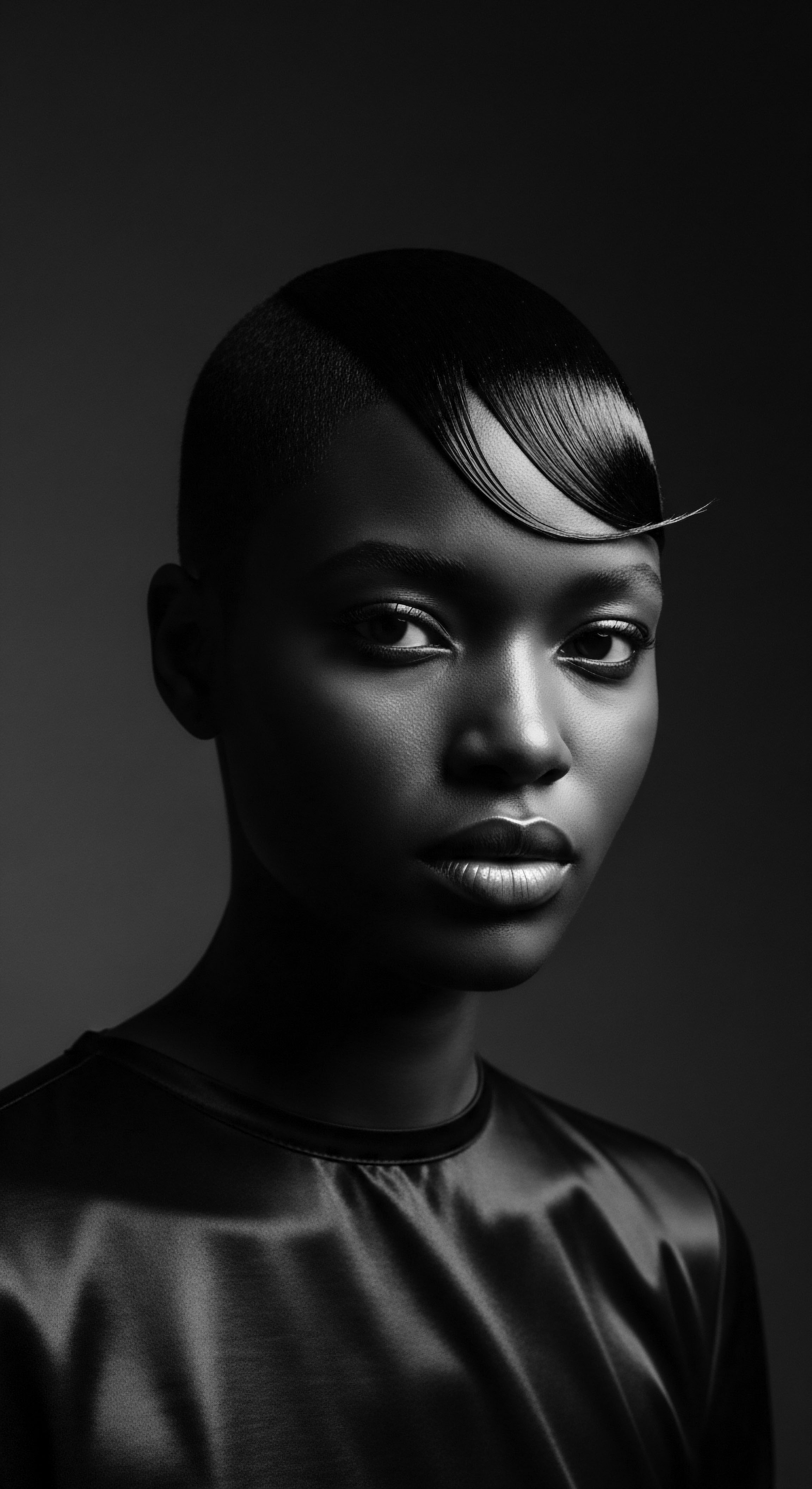
The Hair Strand’s Whispers
To truly grasp the significance of Hair Product Innovation, one must listen to the whispers of the hair strand itself. Each coil, each kink, each wave tells a story of its unique structure and its inherent needs. Textured hair, with its often elliptical cross-section and numerous points of curvature, presents a greater surface area for moisture loss and increased susceptibility to breakage compared to straighter hair types. These biological realities dictated the necessity for specific care rituals and, by extension, the innovative products designed to meet those demands.
The cortex, the inner layer of the hair shaft, holds the melanin pigments that give textured hair its rich spectrum of hues, from deep ebony to warm mahogany. The cuticle, the outermost protective layer, consists of overlapping scales. In highly coiled hair, these scales may not lie as flat, rendering the hair more porous and vulnerable to environmental stressors. Early innovators, perhaps without scientific terminology, intuitively understood these vulnerabilities.
Their creations, whether rich butter blends or protective styling pastes, aimed to fortify the cuticle, seal in moisture, and provide a resilient barrier against the elements. The continuous search for better ways to support the hair’s natural architecture remains a driving force behind product development.
This deep biological understanding, gleaned through generations of observation and experimentation, informed the early definition of effective hair care. It was not merely about superficial appearance; it encompassed the long-term health and vitality of the hair fiber. The initial products, therefore, were not just cosmetic; they were deeply restorative and protective.
This holistic approach, treating hair as a living extension of the self, underscores the enduring legacy of ancestral hair care traditions. The earliest innovations, born from this intimate knowledge, laid the foundation for the complex ecosystem of hair products we observe today.
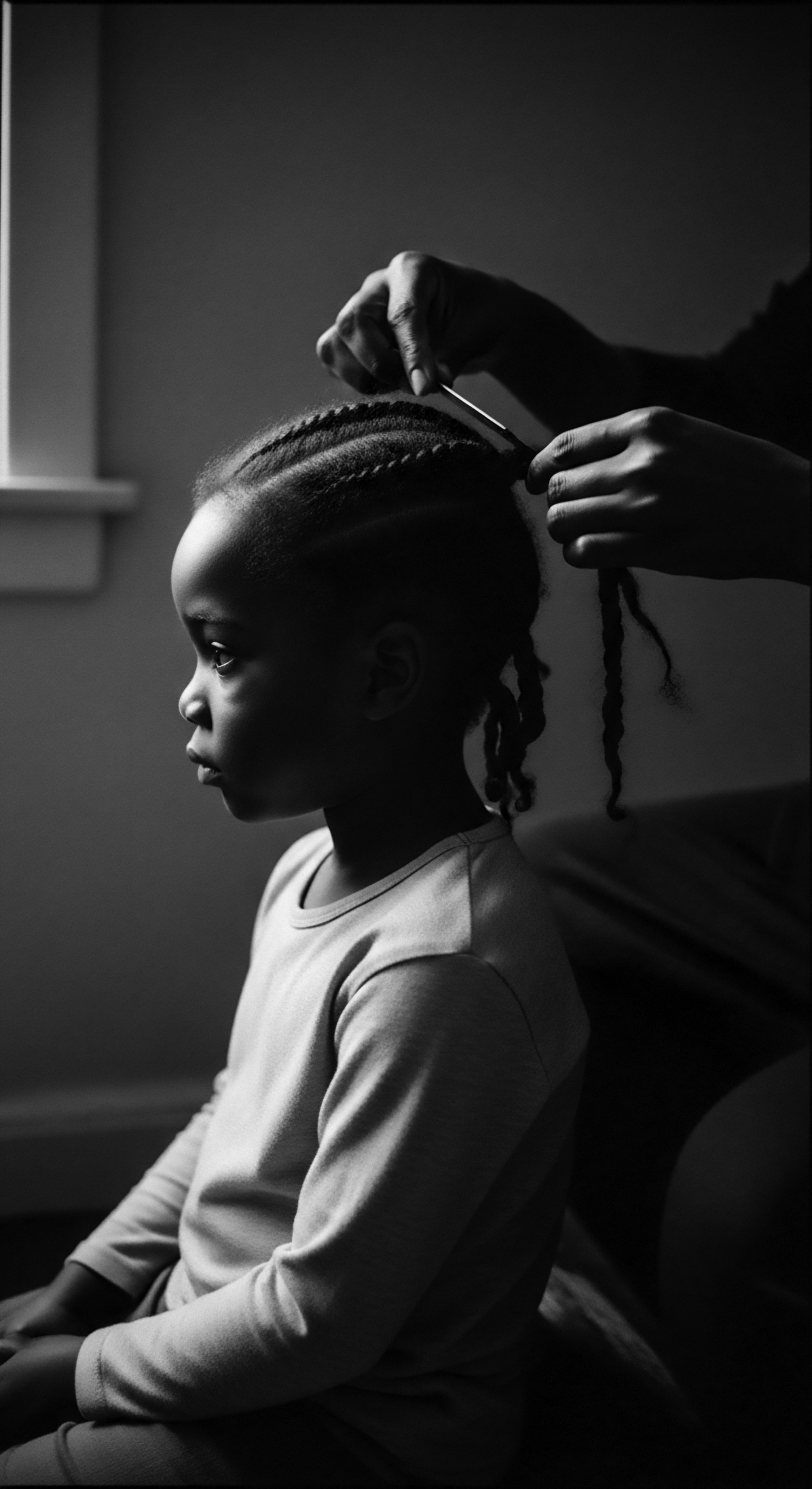
Intermediate
Hair Product Innovation, at an intermediate level of comprehension, expands beyond the elemental to encompass the dynamic interplay of cultural shifts, communal wisdom, and evolving material access. This perspective reveals how the designation of ‘innovation’ became increasingly complex as societies interacted, trade routes expanded, and diasporic communities forged new identities. The significance of these developments lies in their response to the unique challenges and aspirations of textured hair communities, particularly those of Black and mixed-race heritage, who often found their needs unmet by dominant beauty paradigms.
The journey of hair product development through history is a testament to the resilience and adaptability of Black and mixed-race peoples. When traditional ingredients became scarce due to displacement or forced migration, new forms of ingenuity arose. This period saw the blending of indigenous African practices with local resources found in new lands, giving rise to distinct regional hair care traditions.
The interpretation of ‘innovation’ here is not about inventing something entirely new from scratch, but rather about the creative recombination and reapplication of knowledge in altered circumstances. This nuanced understanding reveals a continuous thread of self-determination woven into the fabric of hair care.
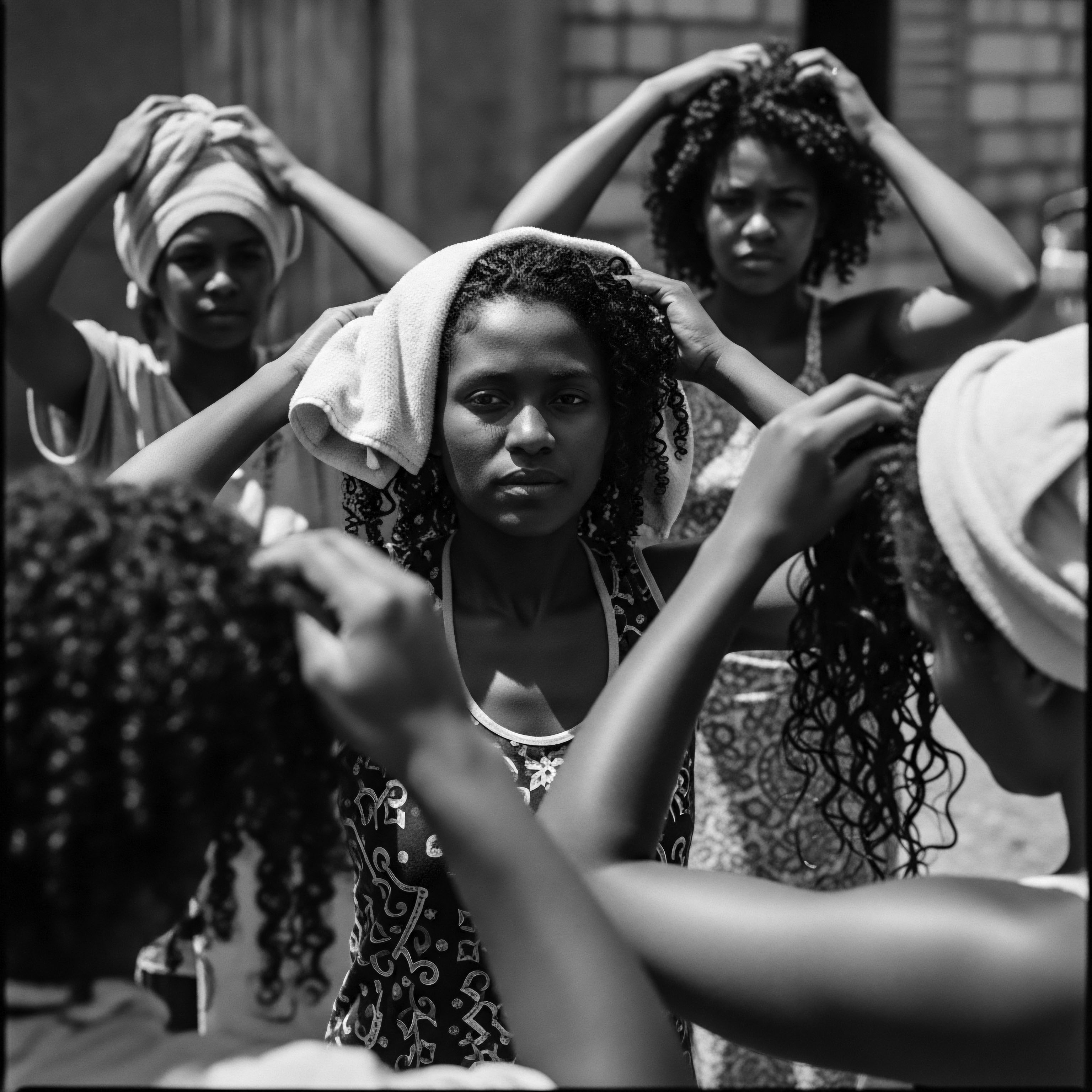
Diasporic Expressions of Ingenuity
The transatlantic slave trade, a cataclysmic event in human history, profoundly reshaped the landscape of textured hair care. Stripped of their traditional tools, ingredients, and communal rituals, enslaved Africans in the Americas and the Caribbean faced immense challenges in maintaining their hair. Yet, from this crucible of adversity, new forms of Hair Product Innovation emerged, born of necessity and a tenacious spirit. Enslaved individuals, often with intimate knowledge of plant properties from their homelands, adapted local flora to create substitutes for familiar ingredients.
They utilized animal fats, rudimentary lyes from wood ash, and herbs found in their new environments to cleanse, condition, and style their hair. These practices, though often clandestine, represented a powerful act of cultural preservation and personal dignity.
The development of early hair preparations in the diaspora was not merely functional; it was deeply symbolic. Hair became a silent language, a medium for expressing identity, resistance, and connection to ancestral roots in the face of dehumanization. The creation of specialized combs, the intricate braiding patterns, and the concoction of conditioning oils all speak to a profound determination to maintain a sense of self. The definition of innovation here extends beyond the physical product to encompass the spirit of ingenuity that defied oppressive circumstances.
As communities grew and the socio-economic landscape shifted post-emancipation, the need for accessible and effective hair products for textured hair became more apparent. This era saw the rise of pioneering Black entrepreneurs, many of them women, who recognized the unmet needs of their communities. Figures like Annie Turnbo Malone and Madam C.J. Walker developed and distributed products specifically formulated for Black hair, creating vast networks of agents and stylists.
Their innovations were not just in the formulas themselves, but in the creation of a distribution infrastructure that reached communities often overlooked by mainstream industry. This period marked a significant expansion of what Hair Product Innovation truly signified ❉ economic empowerment and the creation of a self-sustaining beauty industry.
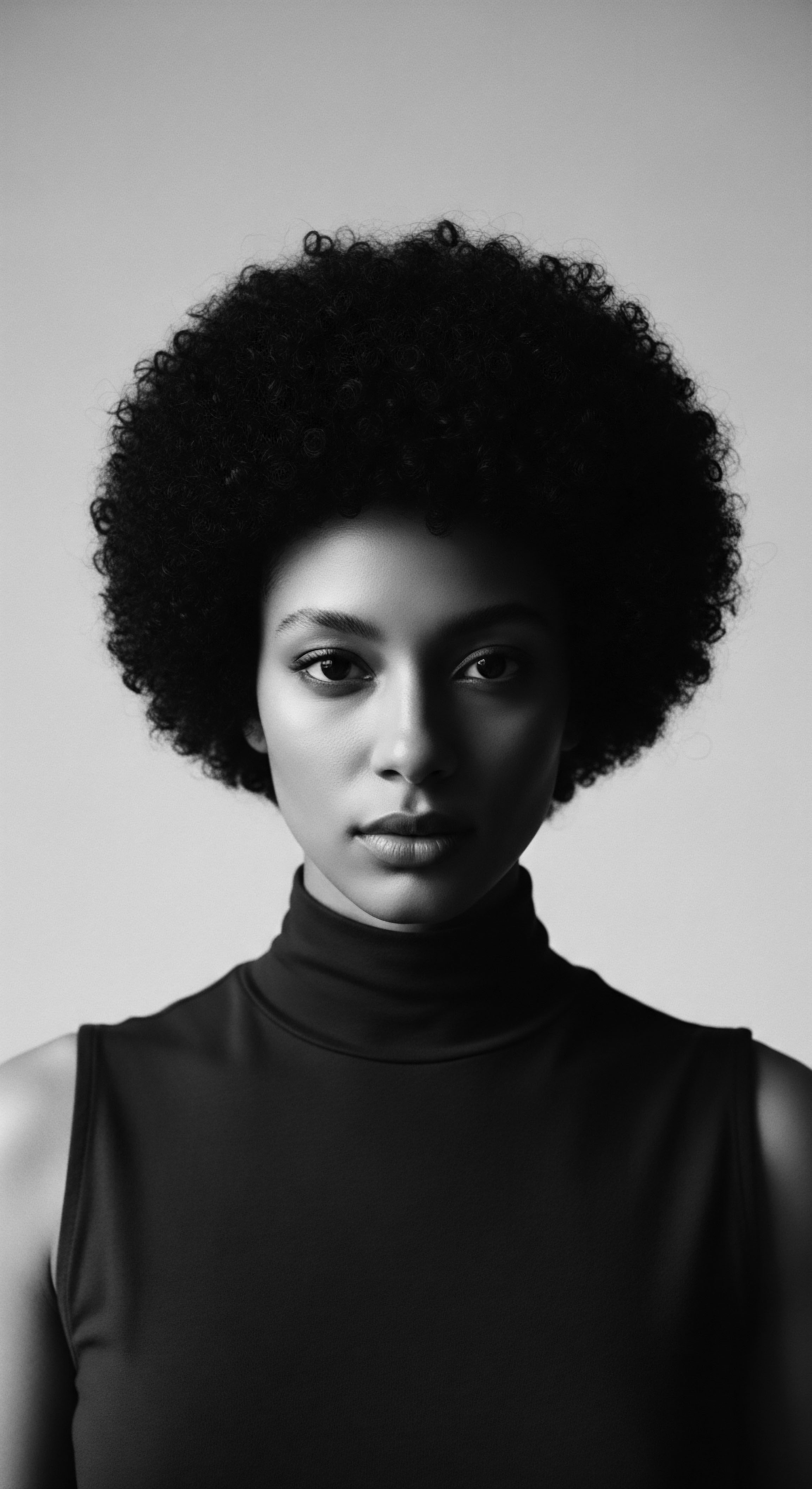
Community as the Crucible of Creation
The communal aspect of hair care has always been a powerful catalyst for innovation within textured hair communities. From ancient village gatherings to modern salon spaces, the sharing of knowledge, techniques, and product recipes has fostered a collective wisdom. This collective intelligence ensures that successful formulations are replicated, refined, and passed down, often through oral traditions or informal apprenticeships. The significance of this shared space cannot be overstated; it transforms individual experimentation into communal progress.
Within these communal settings, the meaning of Hair Product Innovation is constantly re-evaluated through lived experience. What works for one hair type might be adapted for another, leading to a continuous process of refinement. The informal feedback loops within families and social circles have historically driven product evolution, long before formal market research existed. This organic development ensures that innovations are truly responsive to the nuanced needs of the community.
Hair product innovation within textured hair communities is a dynamic response to evolving needs, often forged through the resilience of diasporic ingenuity and the communal sharing of ancestral wisdom.
Consider the evolution of hair oiling practices. What began as simple application of a single plant oil in ancient times gradually developed into complex blends, incorporating multiple oils, herbs, and even aromatic resins, each chosen for specific benefits like scalp health, moisture retention, or scent. This layered approach to product formulation, born from generations of observation and collective refinement, represents a continuous stream of subtle, yet powerful, innovations. The communal testing ground, where women shared their findings and adapted recipes, allowed for this iterative process of perfection.
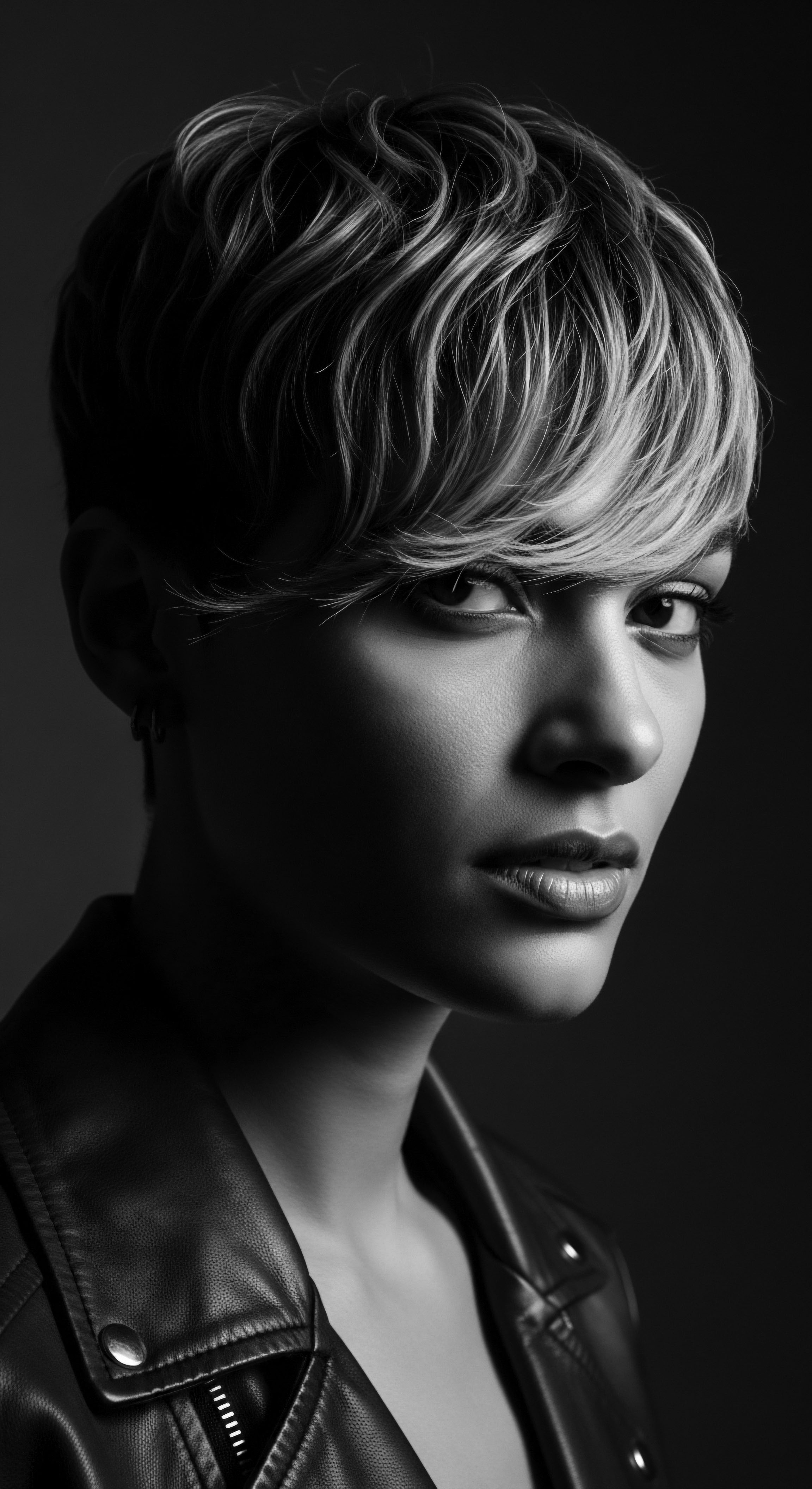
The Alchemy of Ingredients ❉ A Living Legacy
The journey of Hair Product Innovation is inextricably linked to the alchemy of ingredients, a practice that has evolved from ancient ethnobotanical knowledge to contemporary biochemical understanding. Traditional African hair care, for instance, relied heavily on a diverse pharmacopoeia of plants, each chosen for its specific properties. The explication of these ingredients reveals a sophisticated ancestral science.
- Shea Butter ❉ Extracted from the nuts of the African shea tree, this rich emollient has been used for centuries to moisturize, protect, and soften textured hair. Its high concentration of fatty acids and vitamins makes it a potent conditioning agent, sealing the hair cuticle and reducing moisture loss.
- Chebe Powder ❉ Originating from the Basara Arab women of Chad, this blend of herbs (including Croton zambesicus, mahllaba soubiane, cloves, and resin) is traditionally applied as a paste to hair to reduce breakage and promote length retention. Its protective properties stem from its ability to coat the hair shaft, reinforcing its strength and flexibility.
- African Black Soap ❉ A traditional cleanser made from the ash of plantain skins, cocoa pods, and shea tree bark, blended with oils like palm kernel oil. It offers a gentle yet effective cleansing experience, removing impurities without stripping the hair of its natural oils, a key consideration for textured hair.
- Aloe Vera ❉ Widely used across various African cultures, the gel from the aloe plant provides soothing, moisturizing, and conditioning benefits for both scalp and hair. Its enzymatic properties aid in gentle cleansing, while its humectant qualities draw moisture to the hair.
The historical use of these ingredients underscores a deep, intuitive understanding of hair biology. Modern science now validates many of these ancestral practices, confirming the efficacy of natural compounds that have been cherished for generations. The interpretation of these traditional elements as ‘innovations’ acknowledges their enduring relevance and the wisdom embedded within them. This ongoing dialogue between ancient practice and contemporary discovery continually shapes the trajectory of hair product development, ensuring a reverence for the past while looking towards the future.
The shift from purely natural, handcrafted preparations to commercial products introduced new dimensions to Hair Product Innovation. The challenge became how to scale production while retaining the efficacy and cultural relevance of traditional remedies. This period saw the emergence of standardized formulations, often incorporating synthetic ingredients alongside natural ones, to achieve consistency and shelf stability. The balance between traditional purity and modern convenience became a central theme in the ongoing story of hair care.
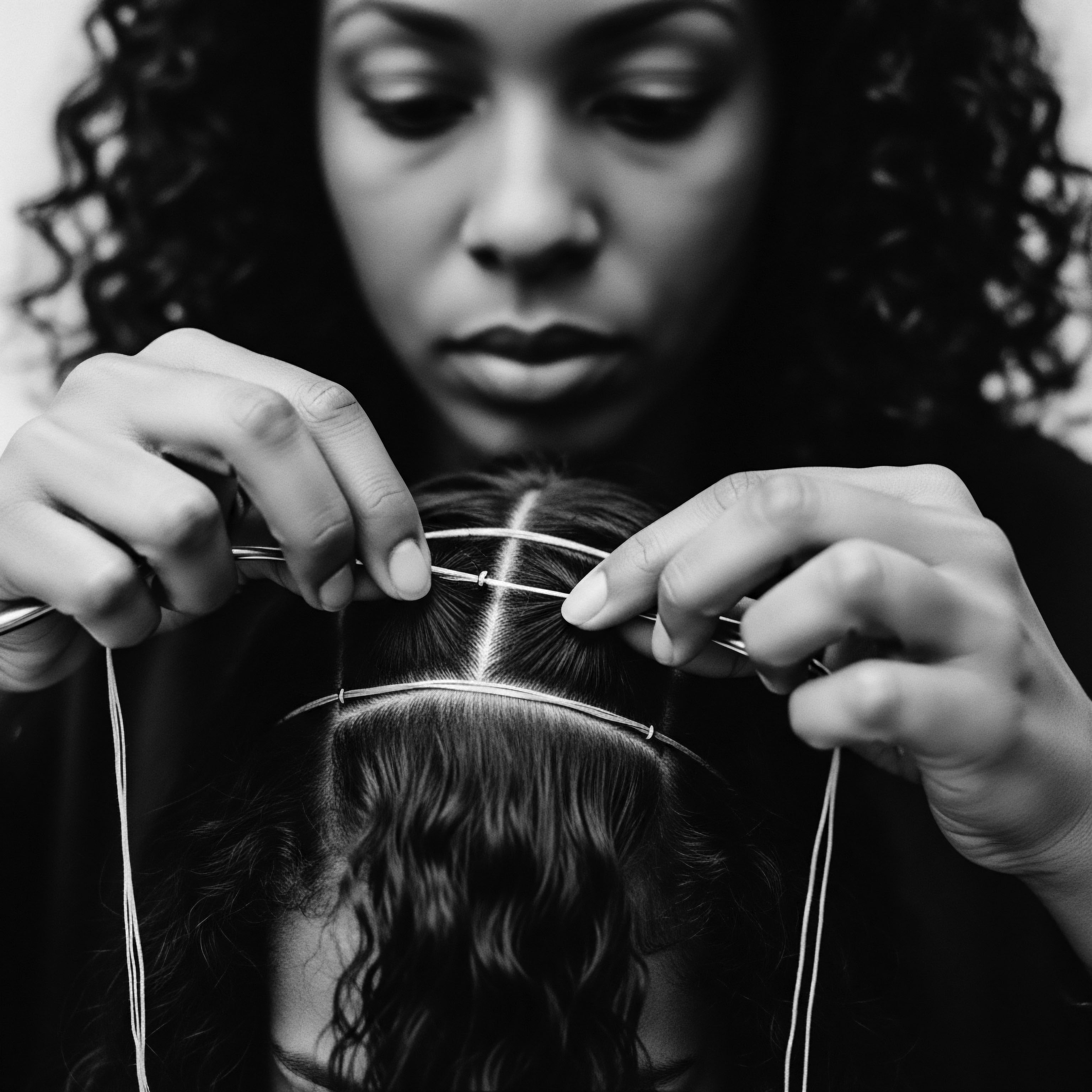
Academic
The academic definition of Hair Product Innovation, within the expansive context of Roothea’s ‘living library,’ represents a sophisticated confluence of ethnobotanical knowledge, material science, socio-cultural anthropology, and economic history, all viewed through the profound lens of textured hair heritage. This interpretation transcends simplistic notions of newness, positioning innovation as a continuous, iterative process deeply embedded in human adaptation, cultural expression, and the enduring quest for holistic well-being. It is the systematic explication of how societies, particularly those with deep connections to textured hair traditions, have conceptualized, developed, and utilized substances and methodologies to address the unique biological, aesthetic, and spiritual needs of hair. This understanding requires a rigorous examination of both tangible formulations and the intangible cultural frameworks that give them meaning and purpose.
The significance of Hair Product Innovation is most acutely perceived when analyzing its role in the preservation and evolution of identity markers within Black and mixed-race communities. For these groups, hair has consistently served as a powerful medium of communication, resilience, and self-determination. Product development, whether ancient or contemporary, has often been a direct response to systemic neglect by mainstream industries or, conversely, a proactive assertion of cultural autonomy.
This analytical perspective reveals that innovation is not merely about market trends; it is about addressing deep-seated cultural needs and affirming diverse beauty standards. The delineation of this phenomenon demands a scholarly approach, acknowledging the complex historical forces that have shaped hair care practices and the products that support them.
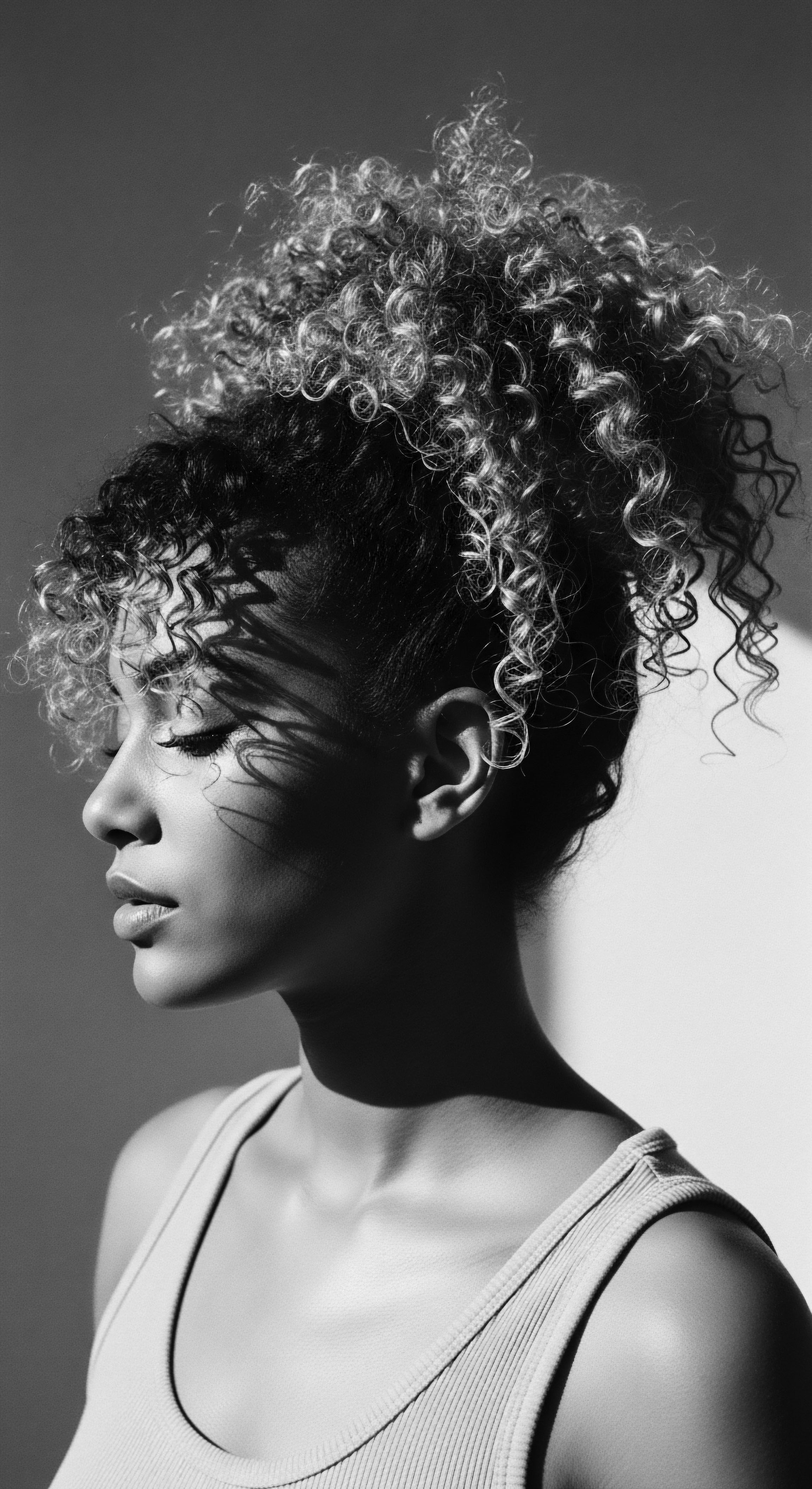
Deconstructing the Helix of Innovation
The scholarly examination of Hair Product Innovation necessitates a deconstruction of its constituent elements ❉ the raw materials, the processing techniques, the application rituals, and the cultural meanings ascribed to the outcomes. From a material science perspective, early innovations involved the understanding of lipid chemistry in plant oils for emollients, the abrasive properties of clays for cleansing, and the structural reinforcement provided by certain proteins or fibers. These early discoveries, though empirical, laid the groundwork for modern cosmetic chemistry. The interpretation of these ancient methods as sophisticated ‘technologies’ reframes our appreciation for ancestral scientific acumen.
A critical aspect of this academic inquiry involves understanding how traditional knowledge systems, often dismissed as anecdotal, find validation through contemporary scientific methodologies. This process is not about ‘discovering’ what was already known, but rather about articulating the ‘why’ behind ancestral practices using modern scientific language. The long-term consequences of neglecting this historical dialogue are profound, leading to a devaluation of non-Western knowledge and a perpetuation of Eurocentric beauty norms. A truly comprehensive definition of Hair Product Innovation must therefore bridge these epistemological divides, acknowledging the contributions of all knowledge systems.
Academic analysis reveals Hair Product Innovation as a complex interplay of science, culture, and history, consistently affirming the profound significance of textured hair heritage.
The social and economic dimensions of hair product development are equally compelling. The emergence of self-sufficient beauty economies within marginalized communities, particularly among Black women in the late 19th and early 20th centuries, provides a compelling case study in applied innovation. These entrepreneurs not only created products tailored to textured hair but also built networks of distribution and education that provided economic opportunities and fostered a sense of collective agency.
This highlights how product innovation can serve as a catalyst for broader social and economic transformation. The successful insights gleaned from these historical precedents continue to inform contemporary movements for inclusive beauty and equitable market access.
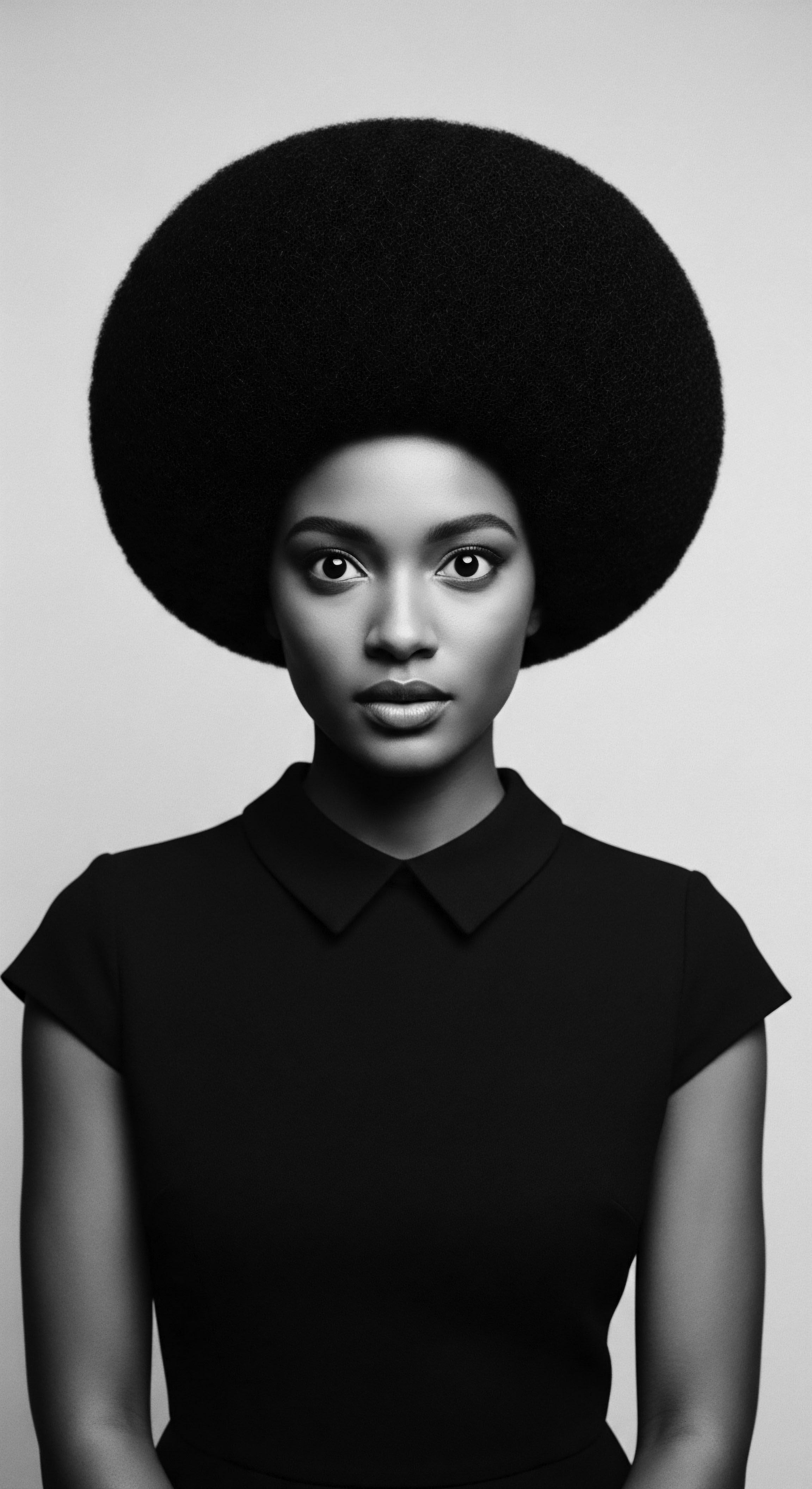
Ancestral Wisdom ❉ A Case Study in Pigment and Protection
To illuminate the profound connection between Hair Product Innovation and textured hair heritage, one can turn to the ancestral practices of the Himba people of Namibia. Their use of Otjize, a distinctive paste made from red ochre, butterfat, and aromatic resins, serves as a compelling case study in the multifaceted nature of traditional hair care. This practice, passed down through generations, is far more than a cosmetic application; it embodies a sophisticated understanding of environmental protection, hygiene, and cultural identity.
The Himba women meticulously apply otjize to their skin and their elaborate hair plaits, which are often lengthened with goat hair extensions. This daily ritual, performed with great care, speaks to a deep connection to their ancestral lands and traditions. While outsiders in the past often viewed this practice as a mere “primitive cultural curiosity,” modern scientific inquiry has affirmed the remarkable efficacy of otjize. A 2022 study by a team of South African and French scientists investigated the physical properties of otjize, concluding that “such a red ochre exhibits an exceptional UV filtration and a significant IR reflectivity substantiating its effectiveness as an effective UV-blocking and solar heat IR reflector in support of the low skin cancer rate within the Namibian Himba community.” (Havenga et al.
2022). This rigorously backed data provides powerful validation for a centuries-old indigenous innovation.
The protective qualities of the ferric oxide within the red ochre, combined with the emollient properties of butterfat, create a natural shield against the harsh desert sun. Beyond sun protection, otjize also serves a hygienic purpose in a water-scarce environment; as it flakes off, it removes dirt and dead skin, contributing to skin and scalp cleanliness. The aromatic resins, such as those from Commiphora multijuga (omuzumba), impart a pleasant scent, further enhancing the sensory experience of this traditional product. The significance of this practice extends into the spiritual realm, symbolizing the earth’s rich red color, blood, and the essence of life for the Himba.
This example powerfully illustrates how Hair Product Innovation, born from deep ancestral wisdom and environmental attunement, can precede and even inform modern scientific understanding. The Himba’s ingenuity in crafting otjize represents a holistic approach to hair and skin care, where aesthetics, protection, and cultural meaning are inextricably intertwined. The designation of otjize as an ‘innovation’ challenges Western-centric views of progress, asserting the enduring value of traditional knowledge systems. It provides a compelling narrative of how ancestral practices offer valuable insights into sustainable and effective care solutions, underscoring the deep human connection to natural resources.
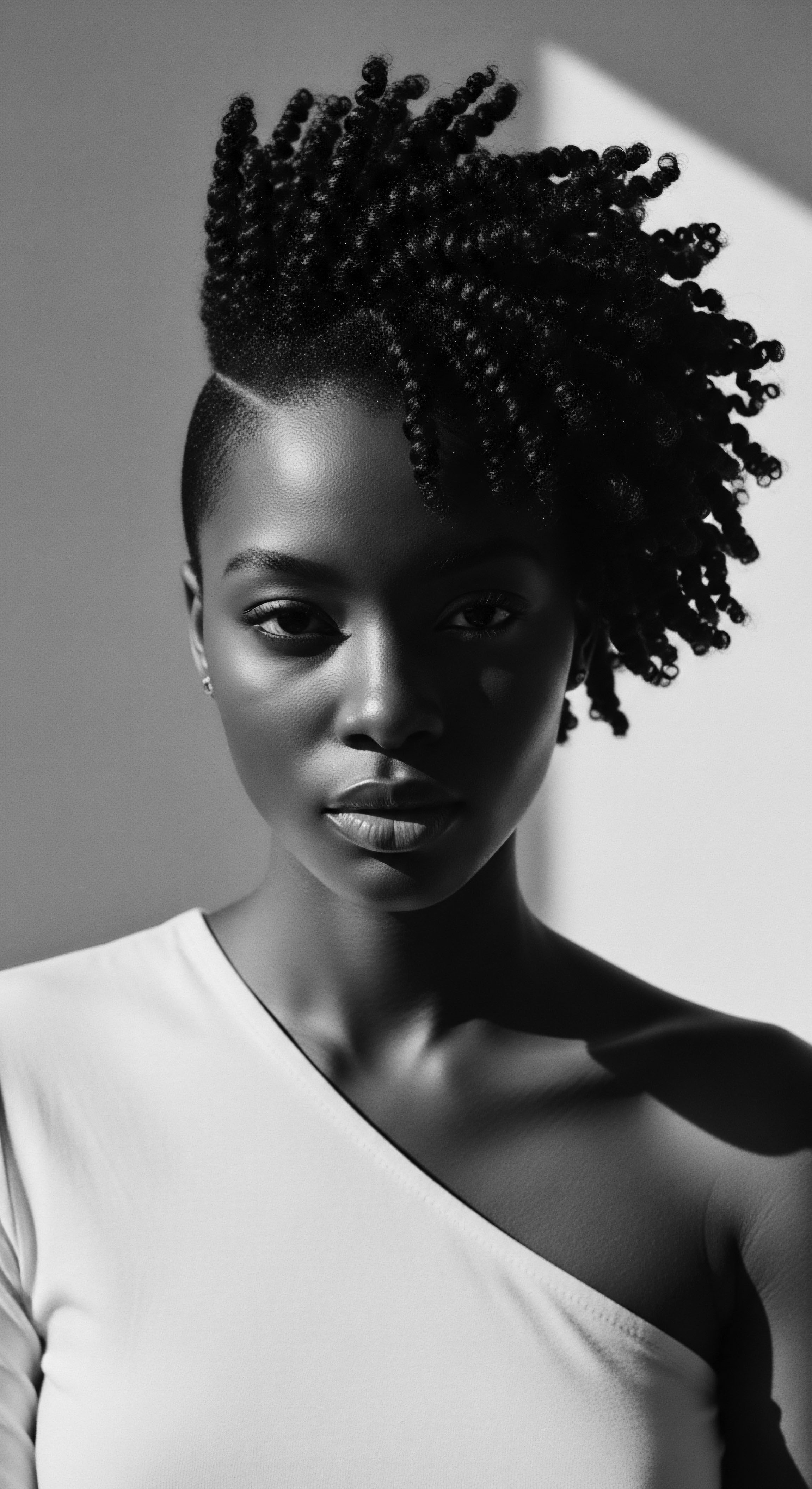
Socio-Economic Currents and the Future of Care
The academic lens also scrutinizes the socio-economic currents that influence Hair Product Innovation, particularly concerning textured hair. The historical marginalization of Black and mixed-race hair types by dominant beauty industries led to a significant gap in product availability and understanding. This void spurred internal community-driven innovation, creating a vibrant, albeit often underserved, market. The financial implications of this self-sufficiency are substantial, with the Black hair care market representing a multi-billion dollar industry globally.
The economic substance of this sector reflects not just consumer demand but also the profound cultural investment in hair care. The continued growth of this market, driven by movements celebrating natural hair and cultural authenticity, indicates a long-term shift in consumer values. The future of Hair Product Innovation in this sphere will likely involve a deeper integration of traditional ingredients with advanced scientific formulations, ensuring both efficacy and cultural resonance. The emphasis will move beyond mere chemical efficacy to encompass ethical sourcing, environmental sustainability, and community empowerment.
The exploration of this field also brings to light the ethical considerations surrounding product development. Who benefits from these innovations? Are traditional knowledge holders adequately compensated or acknowledged? These are vital questions for a scholarly definition of Hair Product Innovation.
The pursuit of sustainable and equitable practices, where the heritage of ingredients and techniques is honored, stands as a critical success insight for the industry moving forward. The long-term consequences of neglecting these ethical dimensions could lead to cultural appropriation and a loss of invaluable ancestral wisdom.
A deeper analysis of the contemporary landscape reveals a fascinating trend ❉ the re-emergence of ancestral ingredients and practices in mainstream hair care. This re-validation, however, comes with its own complexities. Ensuring that these ingredients are sourced ethically and that the cultural narratives associated with them are respected becomes paramount.
The designation of ‘natural’ or ‘ancestral’ must be grounded in genuine connection and not merely marketing rhetoric. The intellectual property surrounding traditional knowledge, often passed down orally, presents unique challenges in a globalized market.
The evolving meaning of Hair Product Innovation also intersects with discussions of decolonizing beauty standards. For generations, textured hair was often subjected to products and practices designed to conform it to Eurocentric ideals. The current wave of innovation, particularly within the natural hair movement, seeks to dismantle these historical pressures, celebrating the inherent beauty and versatility of coils, curls, and kinks. This shift represents a powerful reclaiming of agency and a redefinition of beauty from within the community.
The future of Hair Product Innovation, from an academic perspective, is poised to be a dynamic interplay of advanced scientific understanding, profound cultural appreciation, and a renewed commitment to ethical and sustainable practices. The continued success of this field will depend on its capacity to honor the historical contributions of diverse communities, particularly those with textured hair heritage, while simultaneously pushing the boundaries of scientific inquiry. The insights gained from analyzing the past provide a clear roadmap for future developments, ensuring that innovation truly serves the holistic well-being of the hair strand and the individual it adorns.
| Traditional Practice/Ingredient Red Ochre (Otjize) |
| Ancestral Purpose & Heritage Link Protection from sun and insects, hygiene, cultural identity, ceremonial use by Himba people. |
| Modern Scientific Understanding/Application Validated UV filtration and IR reflectivity; emollient properties of butterfat for moisture retention. |
| Traditional Practice/Ingredient Shea Butter |
| Ancestral Purpose & Heritage Link Deep conditioning, scalp health, moisture sealing in West African traditions. |
| Modern Scientific Understanding/Application High in fatty acids (oleic, stearic) and vitamins A, E, F; known for emollient and anti-inflammatory properties. |
| Traditional Practice/Ingredient Chebe Powder |
| Ancestral Purpose & Heritage Link Hair strength, breakage reduction, length retention, as practiced by Basara Arab women of Chad. |
| Modern Scientific Understanding/Application Coats hair shaft, reinforcing structural integrity; blend of protective herbs and resins. |
| Traditional Practice/Ingredient Plant-based Cleansers (e.g. African Black Soap) |
| Ancestral Purpose & Heritage Link Gentle cleansing, detoxification, scalp balance in various African communities. |
| Modern Scientific Understanding/Application Saponins from plant ash provide natural surfactants; charcoal for purification; often pH balancing. |
| Traditional Practice/Ingredient This table illustrates the continuous thread of wisdom connecting ancient textured hair care practices to contemporary scientific insights, highlighting the enduring value of ancestral innovation. |
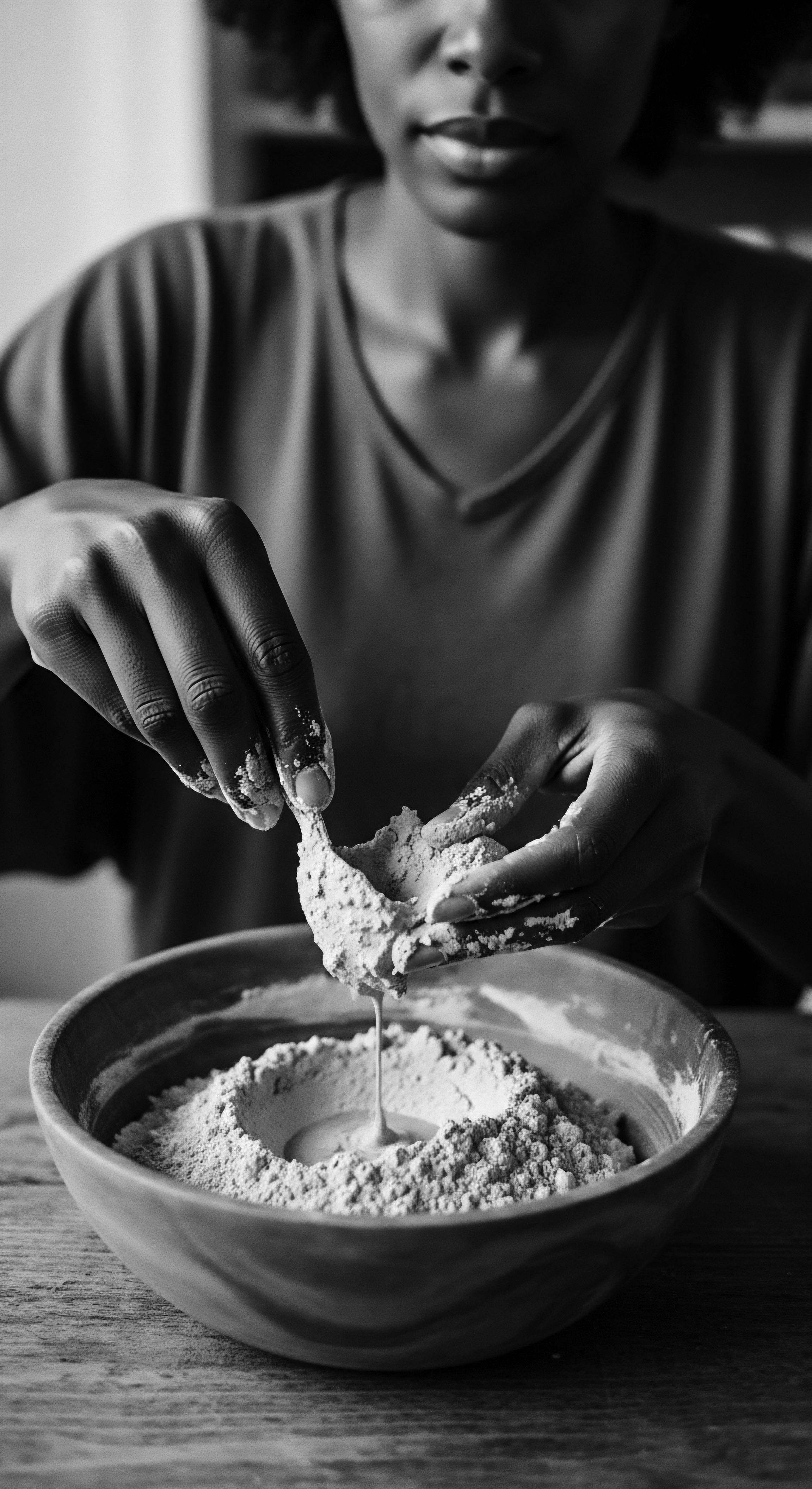
Reflection on the Heritage of Hair Product Innovation
As we draw this expansive meditation on Hair Product Innovation to a close, a singular truth emerges ❉ the journey of care for textured hair is a vibrant, living archive. It is a story not of isolated breakthroughs, but of an unbroken lineage, where the echoes from the source of ancient wisdom continue to shape the unbound helix of future possibilities. The products we use today, whether simple oils or complex formulations, carry within them the tender thread of ancestral hands, the resilience of communities, and the boundless spirit of ingenuity that has always characterized the textured hair experience.
The Soul of a Strand ethos reminds us that hair is more than just protein; it is memory, identity, and a profound connection to those who came before us. Every choice in hair care, from selecting an ingredient to adopting a styling practice, becomes an act of honoring this rich heritage. The evolution of hair product innovation, therefore, is not a linear progression away from the past, but a cyclical dance, a continuous conversation between what was known, what was lost, and what is being rediscovered and redefined.
The future of hair product innovation, particularly for textured hair, must remain rooted in this deep respect for heritage. It demands a commitment to understanding the biological intricacies of diverse hair types, while simultaneously celebrating the cultural richness that has informed centuries of care. It calls for an ethical approach to sourcing, a recognition of intellectual property, and a genuine partnership with the communities whose traditions have often been overlooked or appropriated. This path forward promises not just better products, but a deeper connection to the ancestral wisdom that truly nourishes the hair and the spirit.
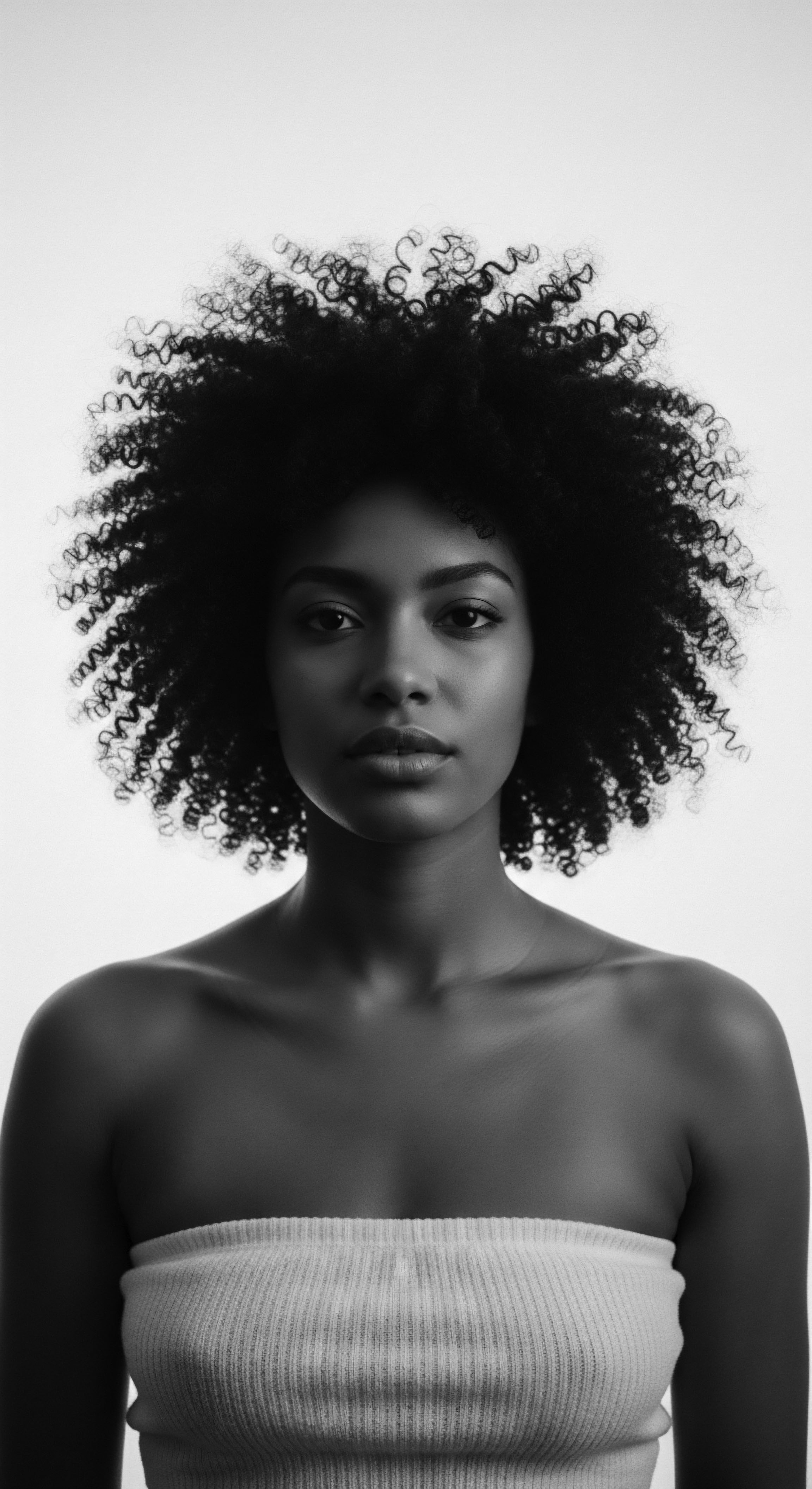
References
- Havenga, D. Akoba, R. Menzi, L. Azizi, S. Sackey, J. Swanepoel, N. Gibaud, A. & Maaza, M. (2022). Physical Properties of Otjize ❉ A Mixture of Butterfat and Ochre Pigment Used by the Himba People of Namibia for Skin and Hair Protection. Journal of the American Academy of Dermatology .
- Walker, A. (2001). Madam C.J. Walker ❉ The Official Biography. Scribner.
- Opoku, K. (1997). African Traditional Religion ❉ An Introduction. Waveland Press.
- Okorafor, N. (2015). Binti. Tor.com.
- Thiongo, N. W. (1986). Decolonising the Mind ❉ The Politics of Language in African Literature. Heinemann.
- White, S. (2001). Styling Jim Crow ❉ African American Beauty Culture During the Jim Crow Era. University Press of Mississippi.
- Byrd, A. D. & Tharps, L. L. (2014). Hair Story ❉ Untangling the Roots of Black Hair in America. St. Martin’s Press.
- Roberts, E. (1998). The Social and Economic History of the West Indies. Longman.
- Elias, P. M. (2005). Skin Barrier Function. CRC Press.
- Shahin, C. (2014). Natural Hair Coloring ❉ How to Use Henna and Other Pure Herbal Pigments for Chemical-Free Beauty. Hachette Book Group.
